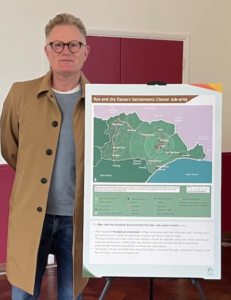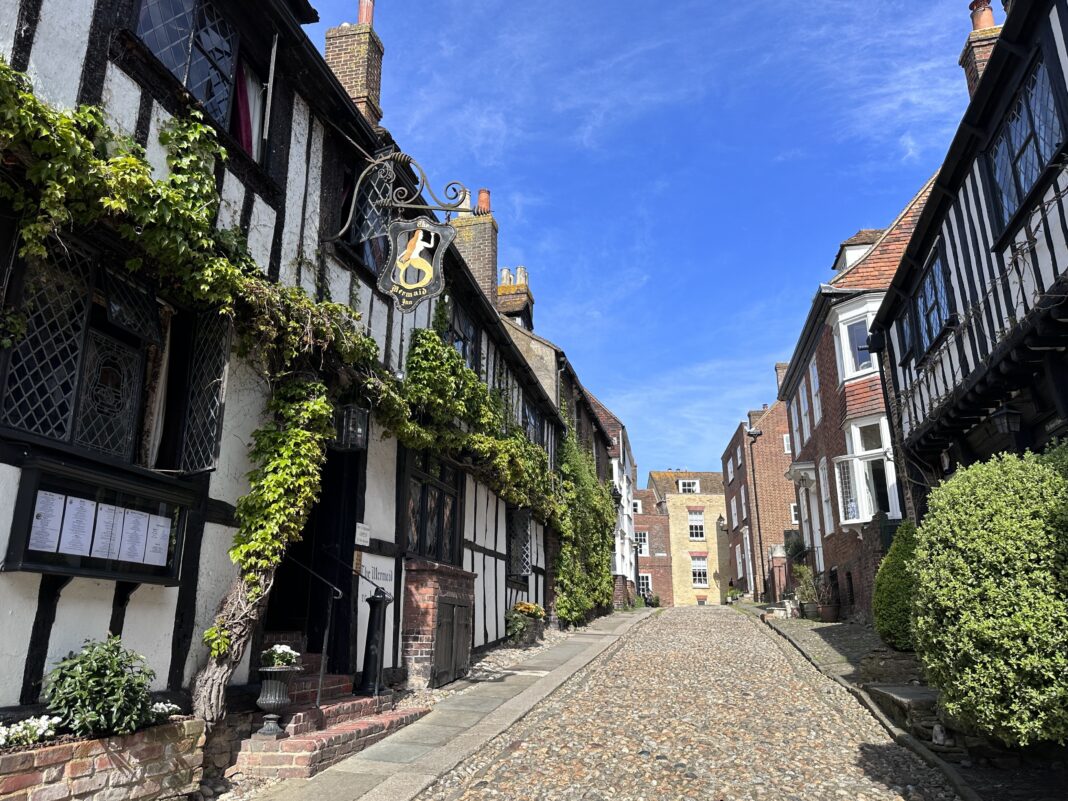The results of a survey and discussions groups looking into the scale of holiday lets and second homes in Rye, Winchelsea and Camber will be published at the end of May. Rother District Council’s Overview and Scrutiny Committee will then discuss the findings at its June 2 meeting. RDC Councillor Simon McGurk looks at what will happen after that – in spite of the changes to local government.
There is a housing crisis in Rye and surrounding communities that has persisted for years and has been aired in Rye News regularly. The solution lies in building a mix of social, affordable, and commercially available homes in our towns and villages for local people.
One issue that is felt to affect housing availability is the prevalence of holiday lets and
second homes in Rye, Winchelsea, and surrounding areas. Between January and March, I chaired a series of meetings to examine the impact on our area and consider potential solutions. These meetings with a core group of local councillors, supported by council officers and stakeholders such as Rye Chamber of Commerce, local businesses, and parish and town councils, provided an opportunity to consider these matters, listen to concerns, and make recommendations to Rother District Council. Councillors, officers and others worked together in a really constructive way to uncover the real issues and to provide a basis for future action to improve our communities.
An online survey on the impact of short-term (ST) lets and second homes drew a wonderful response, if you participated, thank you for your views—they really made a difference. Many expressed concerns about the “empty feel and appearance” of these properties. While second homes and holiday lets contribute positively to the local economy by supporting businesses geared towards tourism, a significant number of residents expressed concerns that these properties contribute to the lack of affordable housing, social housing, and affordable rents in the area. Other concerns included noisy parties and music, litter, rubbish, and waste. Overall though, a balanced approach was favoured that addresses the economic benefits of tourism while addressing the impact on housing and community cohesion.
Some facts and figures
Clarity on numbers is difficult because at the moment registration of ST lets is not compulsory but we do know that Rother has the highest proportion of holiday homes in East Sussex, with 38% of all holiday homes in the county. In England as a whole, Rother is 19th highest in terms of holiday home concentration, with 13.1 holiday homes per 1,000 dwellings. The excellent work of council officers suggests 119 short-term lets in Camber, 116 in Rye and Rye Foreign, and 16 in Icklesham. Council Tax records show a total of 162 short-term holiday lets in these areas. We know from council tax records that there are 139 second homes in Rye and Rye Foreign, and 122 in Icklesham. Most but not all are owned by people mainly living outside Rother.

Interestingly we found limited evidence that housing costs rise as short-term lets increase in number, and the same can be said for second homes, and if research can be found that provides a link I’d be interested to see it. Unoccupied homes and ST lets however significantly affect the nature of an area, disrupting a sense of community and belonging, this is reflected in the survey results. On the other hand, many second home owners in Rye and Winchelsea significantly contribute to our community (this was felt especially in Winchelsea), support local businesses, and maintain properties that might otherwise fall into disrepair. Similarly, we rely on tourism and need a good mix of accommodation to cater to visitors, especially in Camber after the Pontins crisis.
Potential solutions
Regardless of short-term lets and second homes, we must prioritise housing for local people. We want the council to explore all means to ensure that housing is available for local residents, particularly social and affordable housing.
The recent 100% increase in Council Tax on second homes should be allocated to the local areas affected, ensuring that the communities directly benefit from these receipts.
The government will soon provide an opportunity to trial a new electronic registration scheme for short-term holiday lets, ensuring compliance and safety standards. We want Rother to be first in line to use the new system so we know what we are dealing with locally.
Many towns in Europe and the UK have introduced a tourist tax. Rother had over 500,000 tourists in 2023, with Rye accounting for many of these. Consideration should be given to introducing a modest tourist levy to support local infrastructure and services, even if voluntary this would have a significant impact on local budgets to be spent on our communities.
Visitors staying more than two nights spend more and tend to be more responsible according to research, therefore, the local hospitality industry should be supported in finding ways to encourage tourists to stay longer and boost the local economy, especially in ST lets.
What next?
Recommendations will be heard by Rother Cabinet in June, we intend for plans to be implemented before changes to council structures and that they will be carried forward by the new authority.
As important as tourism is to our towns, the standout issue is that we must have housing that is accessible for local people. This needs to be proactively managed by Rother District Council, and we will have new powers to support this with emerging legislation and the new planning framework thanks to the Labour government. A good balance between the prosperity generated by tourism and affordable, social housing can be achieved. As one of your local Labour Rother councillors for Rye and Winchelsea, I am committed to supporting this effort.
Rye News will have more on the report into second homes and holiday lets in coming weeks.
Rye News welcomes all opinion pieces on issues that affect life in Rye and the surrounding villages. If you would like to add yours to our Opinions section email info@ryenews.org.uk.
Image Credits: Kt bruce , Simon McGurk .




I would question the suggested figure of 119 for Camber and there being far more. It would be interesting to know how many properties are registered as businesses and thereby avoiding council tax.
Interesting article, Si. Thank you for this and for your research into the subject. Note the point about second homes and short term lets with respect to housing costs. Intuitively, one would think the supply and demand factor would definitely increase local costs? It would be interesting to quantify the impact.
Housing, and the quality of housing is, as you rightly say, an enormous issue affecting the well-being of local people, our work force, infrastructure, transport system and economy. So is local oversight. In that regard, Cllr. Andrew Mier (LibDem ) raises another factor worthy of consideration in his article this week (https://www.ryenews.org.uk/opinions/a-dangerous-clause).
It feels that there’s a potential danger in the Labour Govt’s Planning and Infrastructure Bill that elected local councillors like yourself and Cllr. Mier could be removed from the planning process in some circumstances… Would that not represent a short-circuiting of local democracy? Hot on the heels of the cancellation of District Council elections, this highlights a worrying trend toward government centralisation and the silencing of local voices. We’re all agreed upon the desperate need to build houses for local people, but we need local insight and oversight of that process too. Or is this what Sir Keir meant when he promised to take a “bull-dozer” to planning?
I’m so glad to see that these facts and figures are being looked into. There can be no denying that far more affordable housing is essential, but with these families/occupants, there also need to be sufficient shops and stores to cater for them. I live in Hastings Old Town and we have the same problem, but too many of our local shops are aimed at the tourist market, with very few shops selling basic everyday goods.
I fear Hastings old Town will not be filled with useful shops in place of tourism type shops. Retail units on high street up and down the country are empty units, vape shops or takeaway shops. ‘Useful’ shops have moved to the internet or large shopping parks or Centers.
Of course there is a serious shortage of social housing in Rye, and its sadly been talked about for years, with most sites in Rye are not viable to accommodate social housing, and the last big development in the town to accommodate social housing was Valley Park, and even that was rejected by most,so thank goodness the inspector allowed this development, which has helped ease the social housing problem.Ive said before the only place that could accommodate social housing and give locals the chance to stay in the town they were born in, is the large field surrounding the tillingreen estate, which would not be out of keeping with the surrounding area, time for those looking for a solution to this serious social housing in Rye, to look at the bigger picture, as over the years talk has been Cheap and action none existent.